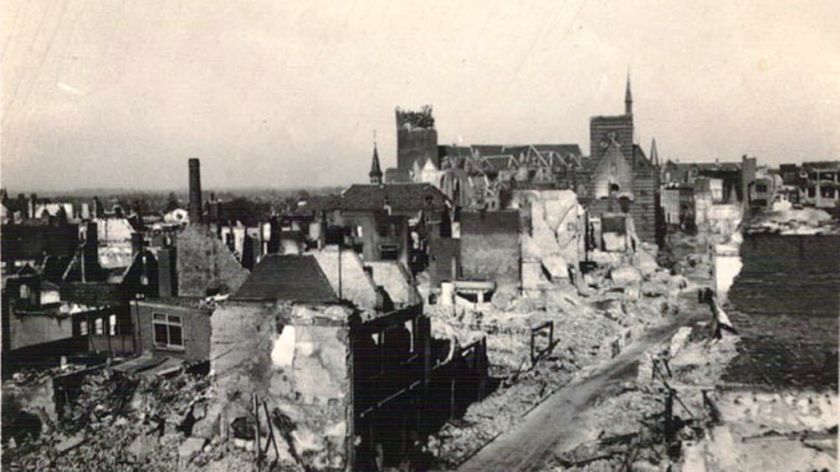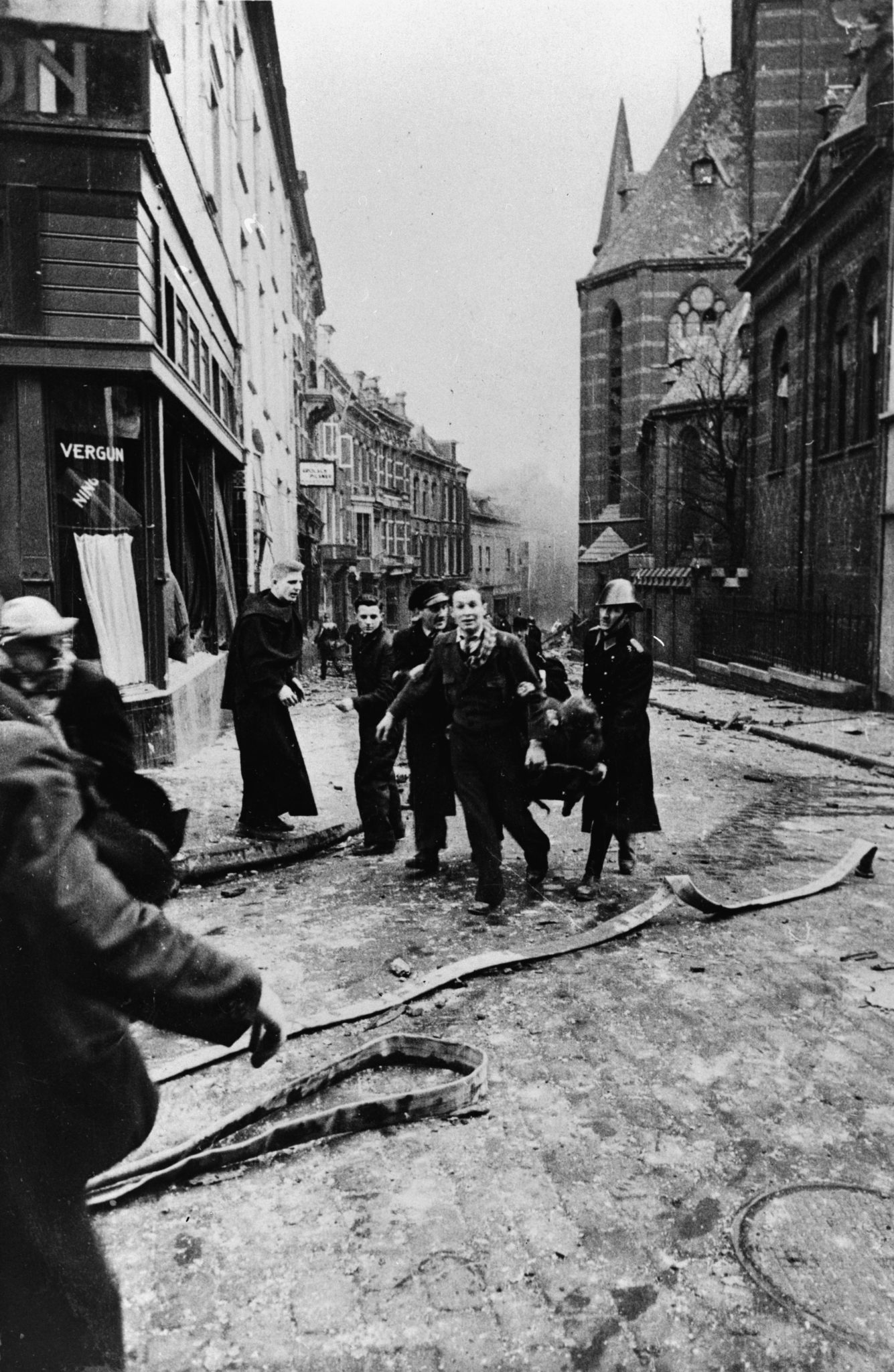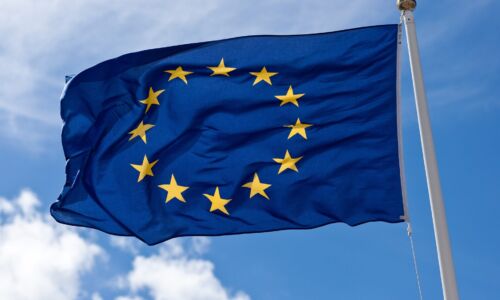Nijmegen might give other bombed cities hope
-
 The city of Nijmegen after the bombing. Image: Regionaal Archief Nijmegen
The city of Nijmegen after the bombing. Image: Regionaal Archief Nijmegen
Friday marks the 75th anniversary of the Allied bombing of Nijmegen city centre. The city looked similar back then to Aleppo or Homs now. Historian Joost Rosendaal hopes that present-day Nijmegen will give Syrian refugees hope.
A bombardment stays with a population for generations. It lodges itself within the resident’s DNA so to speak. His own mother lived on the Ooysedijk in that fatal winter of 1944. She was walking in the vicinity of the Keizer Traianus square when aircraft bombed the city. Beautiful city buildings turned into rubble, some 800 residents, including 234 children, were killed instantly.
Historian Joost Rosendaal was told stories about it at the kitchen table many years later. His mother told of a friend that went missing after the bombing and of a brother that got wounded. It became an important reason for Rosendaal to say ‘yes’ when he was asked in 2005 to do research into the greatest catastrophe in the history of Nijmegen.
Target
Rosendaal’s study revealed that the bombing was not a mistake: the American pilots did not mistake Nijmegen for Kleve or Goch. The flyers were on route to the German city of Gotha, but when their mission was aborted, they looked for targets of opportunity on the way back to Britain. These targets were found in the form of a railway emplacement near Nijmegen, a gasworks in Arnhem, and an industrial area in Enschede.
The additional destruction of the city centre in Nijmegen was certainly not intentional, according to the airmen’s reports. The bombs dropped too early. Rosendaal’s study points out that the flyers were inexperienced. And these were not the only oversights: not all the pilots realised they were targeting Nijmegen, nor did they realise that Nijmegen was occupied Dutch territory and that special clearance was required to bomb it.
‘It’s important to commemorate the event’
No erroneous bombardment then, but hitting the city centre was not intentional either. About 770 civilians were killed for nothing. At least, that’s how many Nijmegen residents still feel about it. And this is exactly what makes processing it so difficult, Rosendaal thinks.

‘You often hear that such a large wound is normal because of the death toll, and at the hands of our American allies on top of that, but that can’t be the reason: operation Market Garden started seven months later, and Nijmegen was on the frontline. Even more people were killed, over a thousand, mostly at the hands of the Germans. Apparently, we have much more of an issue with civilian casualties than with military casualties. Perhaps we feel that soldiers have a choice, or that their deaths are for a good cause and serve a purpose.’
De Schommel
Rosendaal sees it as his mission to give meaning to the bombing. ‘It is important to deal with the event, to try and make some sense of it, so that the large numbers of civilian deaths in Nijmegen at the end of the war were not entirely for nothing.’
That sense can partly be found in the support other war victims feel when they learn about the events in Nijmegen. ‘Someone involved with the annual commemoration of the bombing told me that a group of Syrian refugees, women, walked past the De Schommel monument. A picture of the bombed city made a great impression on the women. They saw their own cities, Aleppo or Homs, in that picture. At the same time, they could see with their own eyes how Nijmegen has recovered. They see a city that has risen from its ashes. Because that’s how it went of course. If you look at the city centre now, 75 years later, you see a beautiful city, in which the material scars, at least, have healed.’
Nijmegen as a symbol for those affected by present-day war. A nice way to look at it, Rosendaal thinks. ‘At the same time, it is important to realise that we live in a privileged society and that we shouldn’t take the city we live in for granted. It was only 75 years ago that nowhere in Nijmegen was safe.’
The boundary of the fire in the city centre will come to life once more Thursday 21 February. At the victims’ commemorative plaques, writers, poets, music groups, and choirs will each commemorate for fifteen minutes, starting at 8 p.m., the victim’s hopes and dreams that existed 75 years ago. There is a meeting place in the church on the Molenstraat from 7 p.m. Guides will invite visitors to take their places on the edge of the boundary of the fire from 7.30 p.m. Joost Rosendaal will speak about Nijmegen and Aleppo in Lux on Sunday. More information about the commemoration (also on Friday, Saturday, and Sunday) can be found here (in Dutch).



